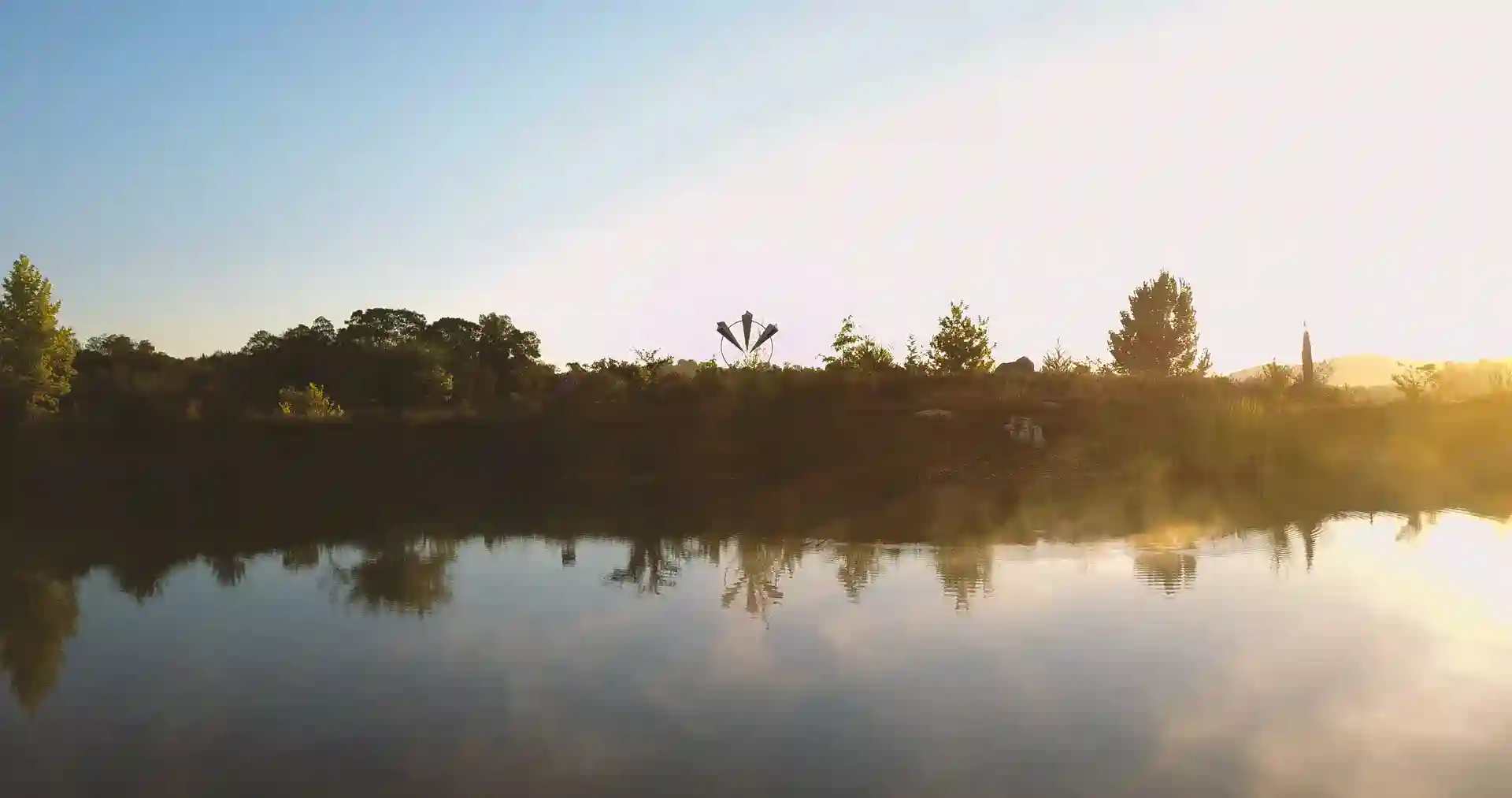Solar Kitchen
At the heart of the Solar Test Field is the kitchen which feeds 50 people using solar technologies, including a Scheffler Mirror, biogas system, solar box-cookers, solar water heaters and a solar tunnel dryer for food preservation. Using the technology in daily life is an essential part of our research. We can make sure they’re adapted to our needs and use the feedback in our ongoing development.
“Every moment on the Earth, the sun radiates 15,000 times more energy than the entire needs of humankind. In our solar kitchen we’re experiencing this reality of energy abundance, as we’ve decided to accept this gift we’re constantly receiving.”
JANOS VALDER, Technologist in the Test Field
Vision
The kitchen is where we’re bringing cycles together, so that people are integrated in a healthy food, water and energy cycle. Food comes from the gardens, we cook with sun and biogas, and we use water from the wells. There is no “food waste” as we use the biogas digester to create methane to cook with and the rest is used as fertilizer on the land. What we eat goes into the compost toilets, again to be used on the land. Our human element is helping to drive a cycle of abundance.
Our kitchen is the heart and soul for the community members that live in the Solar Test Field. As well as serving nourishing vegan meals with food grown in the urban permaculture setting around the Test Field and our South Valley, the Village Plaza is a place for the community to gather.
A key principle of our research is how humans can co-exist in community. And this applies to the way we consume energy. Everyone living in the Solar Test Field is learning how to use these new renewable technologies in a more considerate way. It’s an ongoing symbiotic relationship where we’re learning from our use and adapting to the development of the solar technologies.

Contribute to community-powered energy autonomy!
Your donation will allow us to demonstrate a component system for carbon-neutral villages in sun-rich regions.
Watch the Solar Kitchen in Action
Results

- The Scheffler Mirror is used to cook. It’s a fixed-focus solar reflector, where the shape and tracking system of the mirror are designed to concentrate sunlight onto a static collector outside the mirror’s aperture. The output of a reflector with a surface of 10m² fluctuates depending on the season of the year from 2.2kW during the summer to 3.3kW during the winter, assuming solar radiation of 700W/m². The already described fixed-focus mirror system also allows solar cooking to take place at much higher temperatures. Read more…

- The Solar Tunnel Dryer is used to process seasonal surplus. One half of the floor of the tunnel dryer is painted black and collects the heat of the sun. A solar-powered fan blows the hot air that rises off the black membrane, and dehydrates the food.

- Biogas digester – using the designs of T.H. Culhane, biogas means it’s possible to cook when there’s no sun – on cloudy days and at night. The technology ferments kitchen waste mixed with warm water to produce methane for cooking. Our main digester can process 90L of biogas-mash each day, which provides 10–12 hours on a low flame, or 5–6 hours on a high flame.
- Download the 3m³ biogas digester (floating drum system) construction manual in English and Portuguese.

- Solar box-cookers – parabolic shaped reflectors are used to direct sunlight to a small area to create heat for cooking. While small, they’re great for family use. For example, you can add of water to rice in the morning and it’s cooked by lunch, and you can bake a cake at 150°C.

- Solar water heaters – flat plate collectors and evacuated tube collectors

